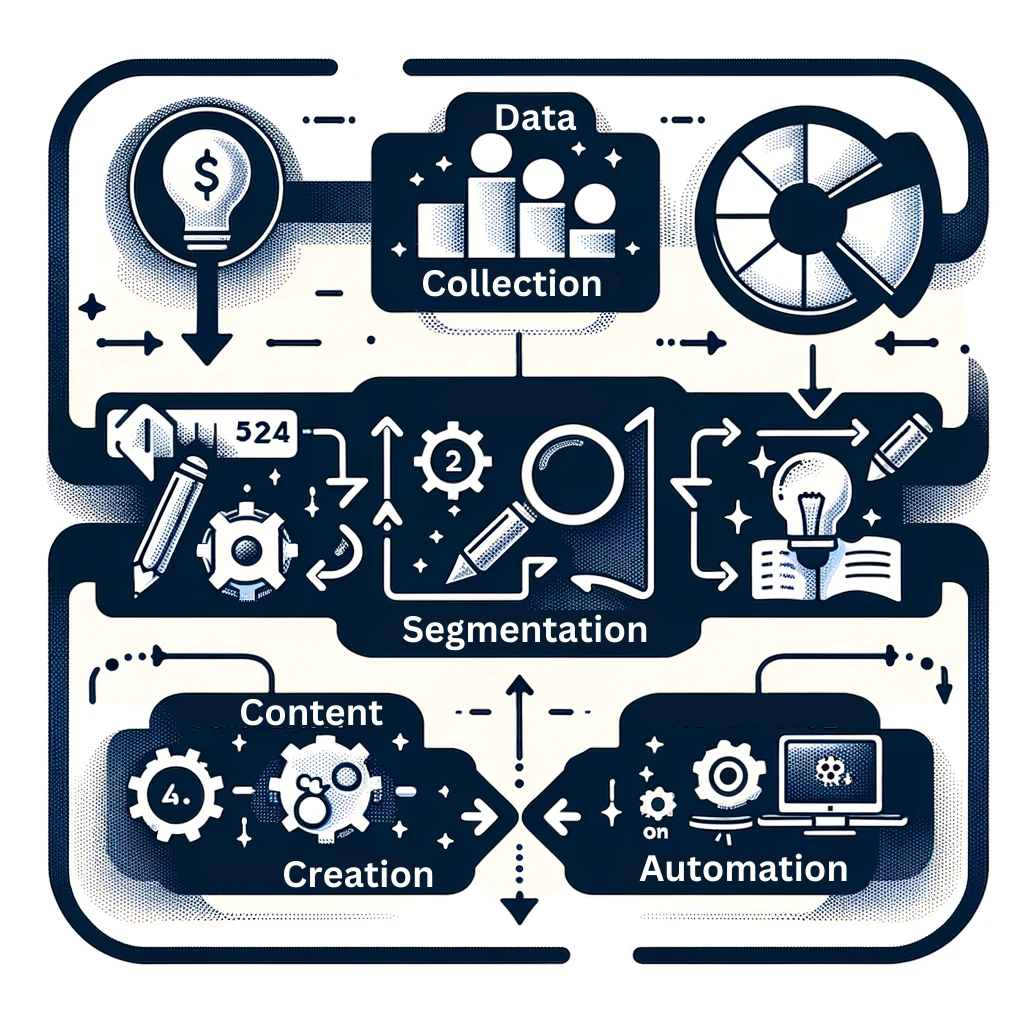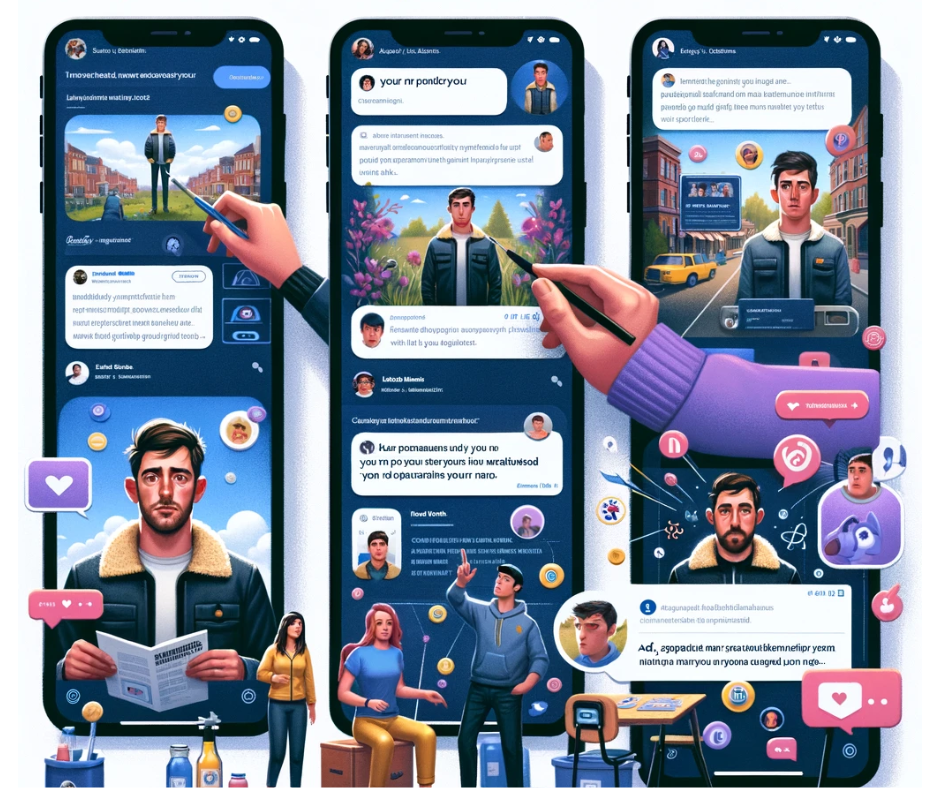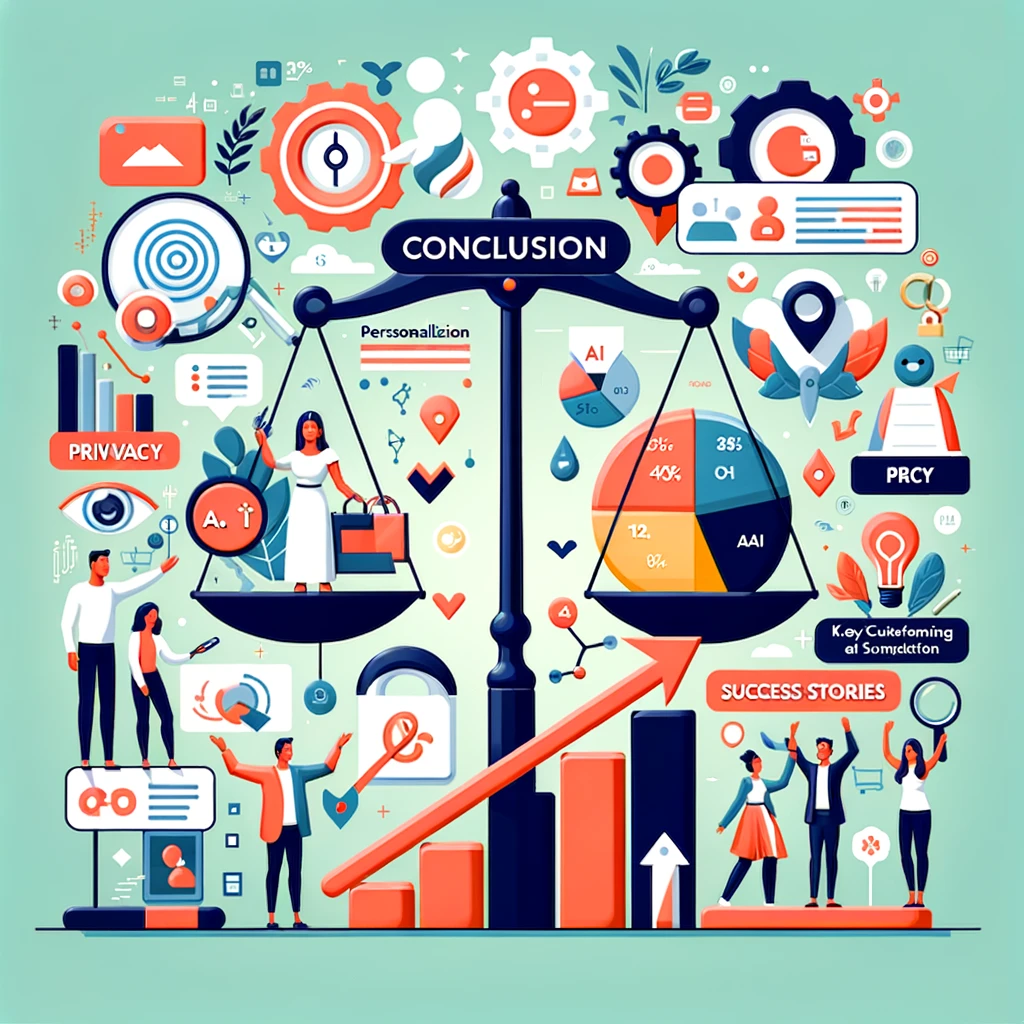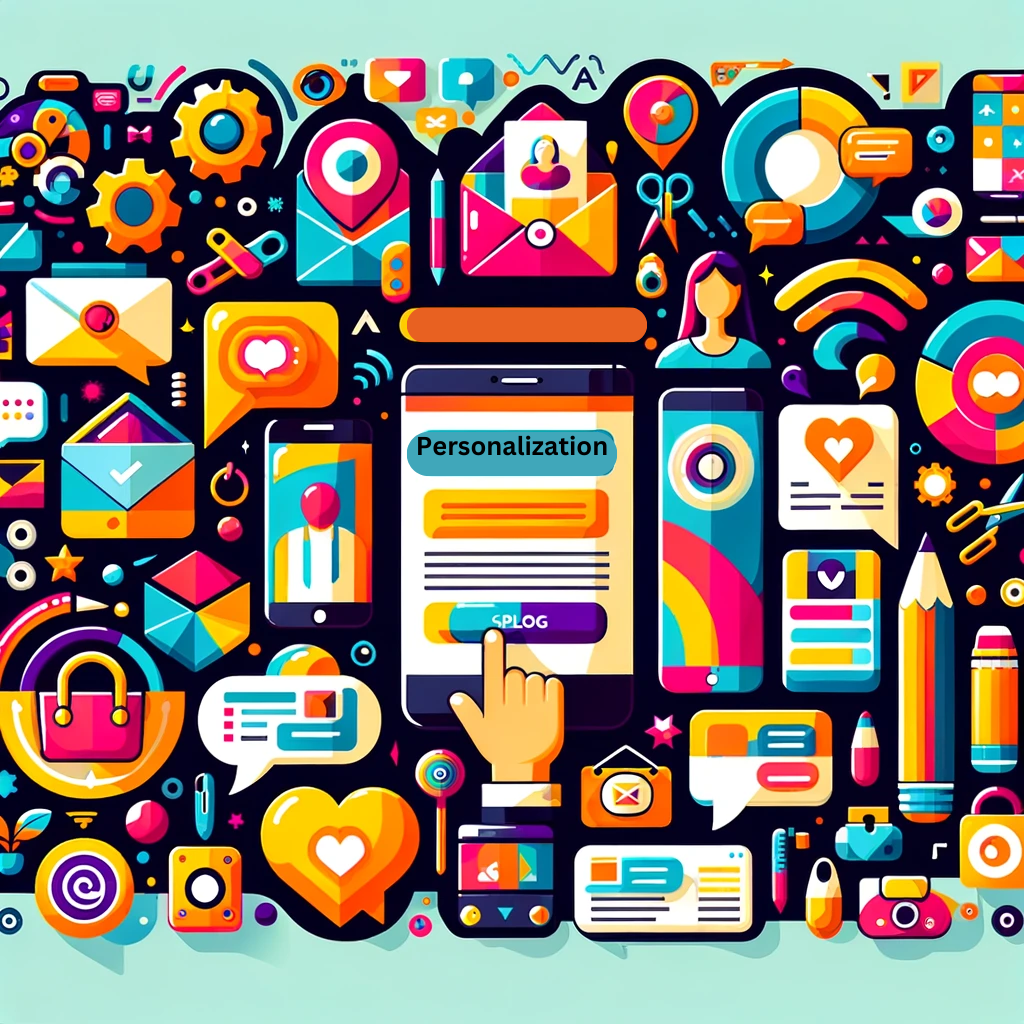In the fast-paced realm of the internet, personalization in digital marketing stands at the forefront of innovation and effectiveness. It is a technique that transforms generic marketing into a tailored experience, resonating deeply with individual customers. This approach, driven by data and technology, allows brands to create meaningful connections, fostering loyalty and boosting business outcomes. As we delve deeper into the nuances of personalization in digital marketing, we’ll uncover its indispensable role in today’s digital landscape, where customer-centric strategies dictate the success of marketing efforts.
Table of Contents
Understanding Personalization
Personalization in digital marketing is more than a buzzword; it’s a pivotal strategy that marks the difference between an effective campaign and one that fails to resonate with its audience. But what exactly does personalization entail?
At its core, personalization means tailoring your marketing messages and offerings to individual consumers based on their preferences, behaviors, and historical interactions with your brand. This can range from addressing a customer by their first name in an email to recommending products based on their browsing history.
The Evolution of Personalization

Personalization isn’t a new concept. It began as simple as businesses remembering their regular customers’ names. But with the digital revolution, it has transformed dramatically. Now, it leverages sophisticated data analytics and artificial intelligence to understand and predict customer behaviors at an unprecedented scale.
Why Personalization Matters
In today’s digital landscape, consumers are bombarded with marketing messages. Personalization helps your message cut through the noise. It’s about showing your customers that you understand their needs and preferences, making your marketing not just seen, but also relevant and engaging.
How Does Personalization Work?
The mechanics of personalization in digital marketing revolve around data. By collecting data points – such as what items a customer browses, what they purchase, and how they interact with your website or app – you can build a detailed profile of each customer. Advanced algorithms and AI tools then use this data to predict preferences and behavior, enabling marketers to deliver content that is most likely to appeal to each individual.
Personalization Beyond Sales
While personalization is often associated with selling, its scope extends far beyond. It’s about building a relationship with your customers. Whether it’s through personalized content in blogs, tailored email newsletters, or customized product recommendations, personalization in digital marketing is about creating a connection.

Benefits of Personalization in Digital Marketing
When we talk about personalization in digital marketing, it’s not just a strategy to enhance customer experience; it’s a powerhouse driving significant benefits for businesses across various sectors. Here’s how personalization can transform your digital marketing efforts:
Enhanced Customer Experience
Personalization is synonymous with creating a customer-centric experience. By tailoring content, offers, and interactions based on individual customer data, businesses can engage their audience in a more meaningful and relevant way. This leads to a positive customer experience, as users feel understood and valued, not just another number in the database.
Increased Engagement and Conversion Rates
When you personalize your marketing, you’re speaking directly to the consumer’s needs and interests. This relevance naturally leads to higher engagement rates. From personalized email campaigns to customized landing pages, personalization ensures that your marketing efforts resonate more deeply with your target audience, which often translates into higher conversion rates.
Improved Customer Loyalty and Retention
Personalization in digital marketing doesn’t just attract customers; it helps keep them. By consistently providing relevant and personalized experiences, you build stronger relationships with your customers. This personalized attention fosters loyalty, as customers are more likely to return to a brand that they feel understands them and caters to their specific needs.
Better Use of Marketing Resources
Personalization allows for more efficient use of marketing resources. By targeting individuals with tailored messages, businesses can reduce the waste associated with broad, untargeted marketing campaigns. This efficiency not only saves time and money but also ensures that marketing efforts yield higher returns on investment.
Gaining Competitive Advantage
In a digital world where consumers are overwhelmed with choices, personalization can be your competitive edge. Businesses that successfully implement personalization in their digital marketing strategies often stand out from competitors, attracting more customers and building a stronger brand reputation.

Key Strategies for Implementing Personalization in Digital Marketing
Implementing personalization in your digital marketing strategy might seem daunting, but it doesn’t have to be. With the right approach and tools, you can create personalized experiences that resonate with your audience. Here are some essential strategies:
Collecting and Analyzing Customer Data
The foundation of personalization is data. Start by collecting data from various touchpoints like website interactions, purchase history, social media engagement, and customer feedback. The next step is analysis — using this data to understand customer preferences, behaviors, and patterns. Tools like CRM systems and analytics platforms can be instrumental in this process.
Segmenting Your Audience
Once you have a pool of customer data, segment your audience into different groups based on shared characteristics or behaviors. This could be demographic segmentation (like age or location), behavioral (like past purchases or browsing history), or psychographic (like interests or values). Effective segmentation allows for more targeted and relevant marketing efforts.
Creating Personalized Content and Messages
Armed with insights from your data analysis and audience segmentation, you can now create content and messages that speak directly to the needs and interests of each group. This might involve personalized email campaigns, tailored product recommendations, or dynamic website content that changes based on the visitor’s profile.
Leveraging Automation and AI
Personalization at scale requires automation. Utilize marketing automation tools and AI to deliver personalized experiences efficiently. These technologies can automate tasks like sending customized emails, offering product recommendations, and even providing personalized customer service through chatbots.
Testing and Refining Your Approach
Finally, personalization is an ongoing process. Regularly test different personalization tactics and analyze their performance. Use A/B testing to refine your approach and continually enhance the personalization experience based on feedback and results.
Tools and Technologies for Personalization in Digital Marketing
To effectively implement personalization in your digital marketing strategy, you need the right tools and technologies. These tools not only simplify the process but also enhance the effectiveness of your personalized campaigns. Here’s a look at some essential types of tools and technologies:
Customer Relationship Management (CRM) Systems
CRM systems are at the heart of personalization. They help you manage customer data, track interactions, and segment audiences. A good CRM system provides a comprehensive view of your customers, enabling you to tailor your marketing efforts based on detailed customer profiles.
Data Analytics and Insights Tools
Understanding customer behavior is crucial for personalization. Data analytics tools allow you to analyze customer data, identify trends, and gain insights into customer preferences and behaviors. These insights are critical for creating targeted and relevant marketing messages.
Content Management Systems (CMS) with Personalization Capabilities
Many modern CMS platforms come with built-in personalization features. These systems enable you to create and manage dynamic content that changes based on user behavior, preferences, or demographics, providing a more personalized web experience.
Marketing Automation Platforms
Automation is key to personalizing at scale. Marketing automation platforms allow you to automate various marketing tasks like sending personalized emails, social media posts, and even creating targeted ad campaigns based on user data and behavior.
AI and Machine Learning Technologies
AI and machine learning are revolutionizing personalization in digital marketing. These technologies can predict customer preferences, automate content personalization, and provide insights that humans might miss. They’re particularly useful in processing large datasets to identify patterns and personalize experiences in real-time.
Personalized Advertising Tools
Tools specifically designed for personalized advertising can help you create more effective ad campaigns. These include platforms for programmatic advertising, retargeting, and social media advertising, all of which use customer data to deliver more relevant ads to your target audience.

Personalization in Email Marketing
Email marketing remains a vital tool in the digital marketer’s arsenal, and personalization is its secret weapon. By tailoring emails to individual preferences and behaviors, businesses can significantly enhance engagement and conversion rates. Let’s break down how to effectively implement personalization in email marketing:
Using Customer Names
It starts with something as simple as using the customer’s name. Personalized email greetings have a profound impact on open rates. This first step of personalization makes the email feel less like a mass message and more like a personal conversation.
Segmentation for Tailored Content
Segment your email list based on customer data like purchase history, location, or engagement level. This allows you to send more relevant content to different segments. For example, sending special offers based on past purchases can significantly increase the likelihood of repeat business.
Behavior-Triggered Emails
Leverage customer behavior to send automated emails triggered by specific actions. This includes welcome emails for new subscribers, birthday or anniversary emails, or follow-up emails after a purchase. These timely, relevant emails enhance the customer experience and keep your brand top-of-mind.
Personalized Recommendations
Utilize customer data to offer personalized product or content recommendations. Analyzing past purchases or browsing behavior can help you suggest items that the customer is likely to be interested in, increasing the chances of conversion.
Dynamic Content
Dynamic content in emails changes based on the recipient’s data. This could mean different images, offers, or call-to-actions depending on the customer’s profile. Dynamic content makes each email feel custom-made for the recipient, enhancing relevance and engagement.
Testing and Optimization
Finally, continually test and optimize your personalized email campaigns. Use A/B testing to determine which personalization techniques resonate most with your audience. This process of refinement is crucial to maximizing the effectiveness of your email marketing efforts.

Personalization in Social Media Marketing
In the realm of social media, personalization is key to creating meaningful connections with your audience. By tailoring your social media strategy to individual preferences and behaviors, you can significantly boost engagement and brand loyalty. Here are some strategies for implementing personalization in social media marketing:
Tailored Content for Different Audiences
Understand the unique demographics and preferences of your audience on each social media platform. Use this insight to create content that resonates with each specific group. For instance, the content that works well on LinkedIn might differ from what’s effective on Instagram.
Personalized Responses and Engagement
Engage with your audience in a personalized manner. Respond to comments, messages, and mentions with a personal touch. This kind of direct, personalized interaction can significantly enhance customer relationships and brand perception.
User-Generated Content
Encourage and share user-generated content. This not only provides authentic material for your platforms but also makes your customers feel valued and part of your brand’s community. It’s a powerful way to personalize the social media experience for your audience.
Customized Ads and Retargeting
Utilize social media advertising tools to create customized ads based on user behavior and preferences. Retargeting campaigns are particularly effective as they remind users of products or services they’ve shown interest in, increasing the likelihood of conversion.
Influencer Collaborations
Partner with influencers who resonate with your target audience. Influencers can create personalized content that speaks directly to their followers, offering a more authentic and engaging way to connect with potential customers.
Analyzing Social Media Data
Leverage the wealth of data available from social media analytics. Use these insights to understand your audience’s preferences, behaviors, and trends. This data is invaluable for refining your personalization strategy and creating more impactful content.

Challenges and Considerations in Personalization in Digital Marketing
While personalization offers numerous benefits, it also comes with its own set of challenges and considerations. Navigating these effectively is crucial for a successful personalization strategy. Here’s what you need to keep in mind:
Balancing Personalization and Privacy
One of the biggest challenges is respecting user privacy while delivering personalized experiences. Consumers are increasingly aware and concerned about how their data is used. It’s essential to be transparent about your data collection practices and to comply with privacy laws like GDPR and CCPA.
Avoiding Over-Personalization
There’s a fine line between being helpful and being intrusive. Over-personalization can make customers feel uncomfortable and lead to a negative perception of your brand. It’s important to use customer data sensibly and to always prioritize their comfort and preferences.
Data Quality and Integration
The effectiveness of personalization depends on the quality of the data you collect. Inaccurate or outdated data can lead to irrelevant personalization efforts. Additionally, integrating data from various sources can be a technical challenge, requiring robust systems and processes.
Scaling Personalization Efforts
As your business grows, scaling personalization efforts can become a challenge. Ensuring that your personalization strategies can grow with your customer base and remain effective requires continuous investment in technology and resources.
Measuring Effectiveness
Determining the ROI of personalization efforts can be complex. It involves tracking multiple metrics and understanding the impact of personalization on each. Setting up the right analytics and attribution models is key to measuring effectiveness accurately.
Keeping Up with Technology
The technology behind personalization is rapidly evolving. Keeping up with the latest tools and trends is essential but can be resource-intensive. Staying informed and adaptable is crucial for maintaining an effective personalization strategy.

Measuring the Impact of Personalization in Digital Marketing
Understanding the effectiveness of your personalization strategies is crucial to refine and improve them over time. Measuring the impact involves tracking specific metrics and analyzing the results. Here’s how you can gauge the success of personalization in your digital marketing campaigns:
Conversion Rates
One of the most direct indicators of successful personalization is an increase in conversion rates. Whether it’s more sales, sign-ups, or other desired actions, tracking conversions before and after implementing personalization strategies can show their effectiveness.
Customer Engagement Metrics
Engagement metrics like click-through rates (CTR), time spent on your website, and social media interactions provide insights into how well your personalized content resonates with your audience. Increased engagement often indicates that your personalization is hitting the mark.
Customer Retention and Loyalty
Personalization aims not only to attract customers but also to retain them. Metrics like repeat purchase rates, customer lifetime value (CLV), and loyalty program participation can indicate how personalization affects customer retention and loyalty.
Customer Satisfaction and Feedback
Direct feedback from customers through surveys, reviews, and feedback forms can provide qualitative data on the effectiveness of personalization. Customer satisfaction scores (like Net Promoter Score) can also be a valuable indicator.
Email Performance Metrics
For personalized email campaigns, metrics like open rates, click rates, and unsubscribe rates are crucial. These metrics can help you understand how well your personalized emails are performing compared to generic ones.
A/B Testing Results
Conduct A/B testing to compare the performance of personalized content against non-personalized content. This can provide clear evidence of the effectiveness of your personalization efforts.

Future Trends in Personalization in Digital Marketing
As we look ahead, personalization in digital marketing is set to evolve with emerging technologies and changing consumer behaviors. Staying ahead of these trends is key for marketers aiming to create more effective and engaging campaigns. Here are some future trends that are shaping the landscape of personalization:
Artificial Intelligence and Machine Learning
AI and machine learning are already pivotal in personalization, and their role is only going to grow. These technologies enable more sophisticated data analysis and predictive modeling, allowing for hyper-personalized experiences that adapt in real-time to user behavior.
Voice Search and Personal Assistants
With the rise of voice-activated devices and personal assistants like Alexa and Google Assistant, voice search optimization will become crucial in personalization strategies. Tailoring content and interactions for voice search can provide a more seamless and intuitive user experience.
Augmented Reality (AR) and Personalization
AR offers exciting new ways to personalize marketing. From virtual try-ons in retail to immersive experiences in travel and real estate, AR can provide highly engaging and personalized experiences that were previously impossible.
Privacy-First Personalization
As privacy concerns continue to mount, finding ways to personalize while respecting user privacy will be a major focus. This could involve new strategies and technologies that deliver personalized experiences without compromising user data.
Blockchain for Transparent Data Usage
Blockchain technology could revolutionize how customer data is handled, offering more transparency and security. This could lead to a new era of personalization, where users have more control over their data and how it’s used.
Omnichannel Personalization
The future of personalization lies in a seamless omnichannel experience. Integrating personalization across all customer touchpoints — online and offline — will be key to delivering a cohesive and engaging customer journey.

Case Studies and Success Stories in Personalization in Digital Marketing
Exploring real-world examples is a great way to understand the impact of personalization in digital marketing. Here, we’ll look at a few case studies and success stories that showcase how effective personalization can lead to remarkable results.
E-commerce Retailer: Enhanced Customer Experience
A prominent e-commerce retailer implemented personalized product recommendations on their site. By using customer browsing history and purchase data, they were able to suggest relevant products, resulting in a 35% increase in conversion rates and a significant boost in customer satisfaction.
Travel Company: Personalized Email Campaigns
A travel company used personalized email marketing to offer customers tailored holiday packages. By segmenting their email list based on past bookings and expressed interests, they achieved a 50% higher open rate and a 25% increase in booking rates compared to their standard email campaigns.
Tech Company: AI-Driven Content Personalization
A technology company utilized AI to personalize content on their website. The AI algorithm analyzed visitor behavior in real-time, adjusting the displayed content to match user interests. This led to a 40% increase in time spent on the site and higher lead generation rates.
Retail Chain: Omnichannel Personalization
A retail chain integrated personalization across their online and offline channels. Customers received personalized offers both in-store and online based on their shopping history and preferences. This omnichannel approach resulted in a 20% increase in overall sales and improved customer loyalty.
Healthcare Provider: Personalized Patient Communications
A healthcare provider implemented a personalized communication system for patients. By sending tailored health tips and appointment reminders based on individual health profiles, they saw an increase in patient engagement and a decrease in missed appointments.

Conclusion
As we’ve explored throughout this blog post, personalization in digital marketing is no longer just an optional strategy; it’s a critical element for success in the digital world. By tailoring experiences to individual customers, businesses can create more meaningful connections, drive higher engagement, and ultimately, achieve better results.
The journey of personalization, from collecting and analyzing data to implementing various strategies across email, social media, and other channels, is an ongoing process. It requires a blend of technology, creativity, and a deep understanding of customer needs. However, the payoff is significant. Businesses that excel in personalization not only see improved metrics like conversion rates and customer retention but also build stronger, more lasting relationships with their customers.
As we look to the future, the landscape of personalization in digital marketing will continue to evolve with new technologies and changing consumer expectations. Staying adaptable, respecting customer privacy, and continually refining your approach will be key to staying ahead in this dynamic field.
Remember, personalization is about more than just sales; it’s about delivering value and relevance to each individual customer. By putting the customer at the center of your digital marketing efforts and embracing the power of personalization, you can create experiences that resonate, build trust, and drive growth.
Thank you for joining us on this journey through the world of personalization in digital marketing. We hope these insights and strategies will help you harness the power of personalization in your own marketing efforts. Keep testing, keep learning, and keep personalizing — the future of marketing is personalized!





